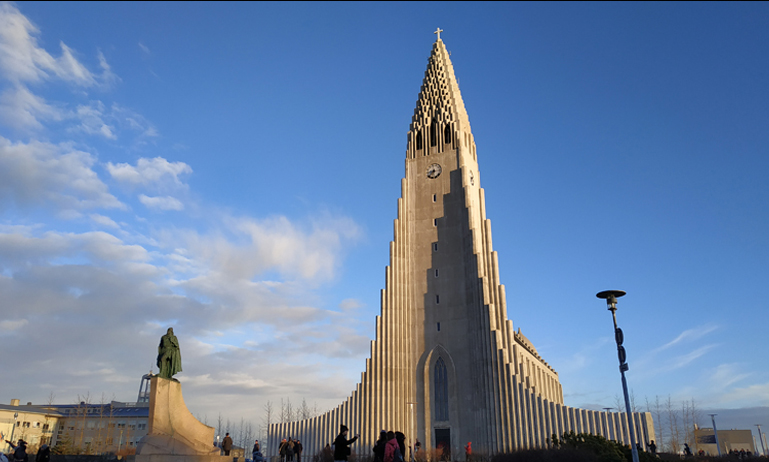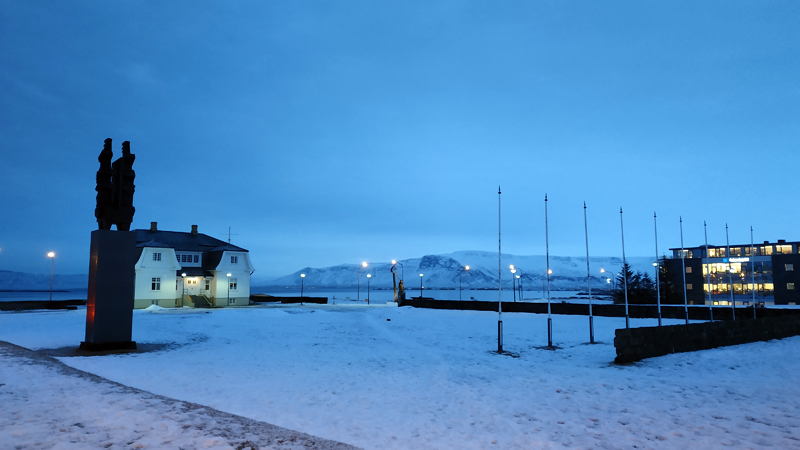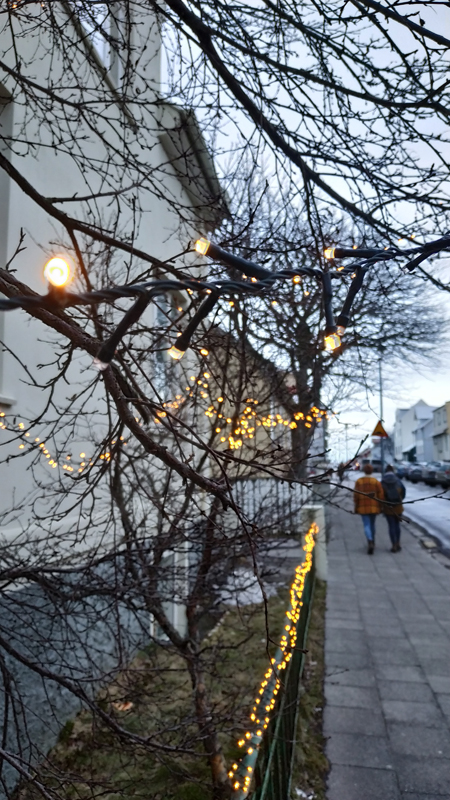First impressions of a Spaniard living in Iceland
When I got back from my trip around Europe a few months ago, the last thing on my mind was that I’d end up moving to Iceland. After spending half a year working abroad as a volunteer and visiting incredible countries and places, I decided it was time to return and “settle down.” By a twist of fate, a great opportunity popped up in Iceland… and off I went!
As you can imagine, Spain and Iceland are worlds apart, and the culture shock was real. So, during my first few days in Reykjavík, I made a list of things that caught my attention, and today I’d like to share them with you. Here we go!
Note: I made this list back in February 2019.
The Weather in Iceland: If You Don’t Like It, Wait Five Minutes
If there’s one thing you can’t trust in this life, it’s Icelandic weather. It can literally change in a matter of minutes. In a single day, you might experience snow, sunshine, clouds, wind… everything! You can’t fully rely on the weather forecast, so you need to be prepared for all weather conditions. Icelanders have a saying: “If you don’t like the weather, wait five minutes.”

One thing I’ve noticed so far is that the wind is a constant companion here. Whether it’s gentle or strong, there’s almost always some wind. If it’s snowing or raining and you have to walk somewhere, it can turn into quite an adventure.
However, to my surprise, it’s not as cold as I expected. I imagined myself bundled up in a million layers of clothing, but the weather is actually much more bearable, thanks to the North Atlantic stream.
Prices and Store Hours (Especially the Supermarkets)
Although I was mentally prepared, one of the things that really hit me was the cost of living here. While salaries match the high standard of living, Iceland is one of the most expensive countries in the world, and it can be a bit overwhelming at first for newcomers. Like everywhere, some places are more expensive than others, something I quickly learned during my first supermarket run.
After some online research, I found that Bónus, the supermarket with the pig logo, was the cheapest option. On my first day of work, I got home and, after a short rest, headed out to shop at around 7 p.m. Imagine my surprise when I arrived and saw that the store had already been closed for an hour! In Iceland, store hours are rather peculiar. Most supermarkets open around 11 a.m. and close by 6 p.m., so you have to be quick if you want to shop. On the bright side, supermarkets are also open on Sundays, which is uncommon in Spain.
That day, I had to change plans and ended up at Krambúðin, a 24/7 convenience store near my place. Since I wasn’t yet used to Icelandic króna, I used a currency converter on my phone… and nearly had a heart attack when I saw the prices! I bought four things, and they cost at least three times what they would in Spain. After that initial shock, I made my next grocery run at Bónus (this time, during opening hours), and the bill was much more reasonable. Prices at Bónus are relatively similar to Spain’s and affordable, considering it’s Iceland. So, if you’re visiting Iceland on a budget, Bónus is your go-to.
The Paperwork: Simpler Is Better
One of the first things I had to deal with when I arrived in Iceland was the paperwork involved in moving to a new country. Since Iceland is part of the EEA, the bureaucracy isn’t too complicated, though there are a few things you need to do. For instance, you need to register your address and sign up as a resident (which means getting your kennitala, Iceland’s social security number), open a bank account, and get a local SIM card.
In my case, I started the kennitala process with help from my company, and it went smoothly. But when I arrived, I had to visit the office in person with my passport to verify my arrival. And that’s when something surprising happened.
To complete the registration, I needed to provide an address. The problem was, I had just moved two days earlier and was staying in temporary housing, so I didn’t have a permanent address yet. The staff member asked where I was staying, and I said, “with friends,” so he asked for that address. I was a bit confused because he didn’t ask for any proof or documentation, and it felt strange to register in Iceland with an address that wasn’t mine. The thing is, I could have given any address, and the employee would have had no way of knowing if it was true.
So…
I gave him the temporary address, and he said not to worry; once I had a permanent one, I could return to the office to update it. So that’s what I did. When I signed my apartment contract, I went back to the office, and in a literal minute, the change was done. They only asked for my passport—no contract, no other paperwork. Again, I could’ve given a completely random address, and no one would have known!
This really stood out to me because when I moved from Cádiz to Barcelona, the amount of paperwork I had to deal with was huge: apartment documents, owner’s authorization, a filled-out form explaining why I was registering, passport-sized photos… the list goes on.
The Alcohol Business in Iceland
Unlike in Spain and many other countries, you won’t find alcohol in Icelandic supermarkets. The only stores that sell alcohol are government-owned shops called Vínbúðin. This was quite a surprise because, in Spanish supermarkets, there’s always a section for alcohol or even different sections for wine, beer, etc. But in Iceland, if you want to buy alcohol, you have to go to one of these specific shops.
What’s more, you need to be at least 20 years old, and they take this rule very seriously. I’m 27, and I’ve been asked to show my ID several times to buy a bottle of wine or some beers (not sure if I should take that as a compliment or not!).
This might be because alcohol was only legalized relatively recently in Iceland. It wasn’t until 1989 that all forms of alcohol were made legal, so you could say that consumption has taken a while to become normalized.
The Kindness of Drivers
This might sound a bit odd, but who hasn’t crossed a pedestrian crossing with the fear that a car might zoom past? There are a couple of things worth mentioning here. First, in Iceland (or at least in Reykjavik), not all the pedestrian crossings are marked the way we’re used to. They’re camouflaged in the sense that the sidewalk merges with the road, hinting that it’s a crossing.
When there’s no snow, it’s no big deal, but when everything’s frozen over and you don’t know the area, you just have to assume they’re there. On my first day of work, I wandered around for a bit because I didn’t know how to cross the road. I ended up taking a pretty big detour, only to later realize that the crossing was right next to me. The problem? It was completely covered in snow…

On the other hand, I was surprised by how kind the drivers are. If they see someone about to cross the street, they stop well in advance. In Spain, it’s not uncommon to see a driver speed up to cross the pedestrian lane before the person reaches it, just to avoid stopping. Here, drivers don’t stress—they’ll happily wait for you to cross. Although sometimes it’s a bit funny because cars will stop even before you’ve reached the crossing, and you feel the “pressure” to hurry up so the poor driver doesn’t have to wait too long.
Icelandic Surnames
Another big difference compared to other countries is how surnames are structured. In Spain, we have two surnames, typically the father’s first and the mother’s second. In other countries, it’s usually just one surname, and it’s generally the father’s. Well, in Iceland, they do things completely differently: they take the father’s first name and add -son (son of) or -dóttir (daughter of). For example, if my father’s name was Jón, my last name would be Jónsdóttir (daughter of Jón), and my brother’s would be Jónsson (son of Jón). So, siblings don’t necessarily have the same last name. It all depends on the father’s name.
Street Decorations
Even though it’s already mid-February, the houses in downtown Reykjavik are still adorned with Christmas lights and decorations, giving the city a special charm. Reykjavik is very peaceful, and despite being the capital, there aren’t too many tourists, so walking through the streets doesn’t feel overwhelming.

On another note, it’s also a very safe city (just like the rest of Iceland). It doesn’t matter if you’re walking alone at night; it’s unlikely that anything bad will happen. Of course, you should always stay alert because you never know what could happen, but compared to other cities or countries, it feels very safe and trustworthy. In fact, in 2018, Iceland was named the safest country in the world.
Heating: Better Always Than Never
In Iceland, they use geothermal energy for electricity and heating, which comes with several perks, including lower costs. Icelanders always keep the heating on, and if they get too hot, they simply open a window. Done!
In Spain, we only use heating in the winter when it’s really cold, but the rest of the year we barely touch it. In summer, we often rely on air conditioning. Considering that energy isn’t exactly cheap in Spain, we have to be mindful of our usage. In Iceland, that’s not an issue, and the same heating system is used all year round, whether it’s hot or cold.
The Smell of the Water
The first time I showered, I almost freaked out. You can’t imagine the smell that came out of the faucet when I turned on the hot water—it was like the smell of rotten eggs. At first, I thought something was broken, but then they explained that in Iceland, there are no water heaters, and the hot water comes through geothermal energy. That’s why it has such a strong sulfur smell. My advice: if you’re going to drink tap water, wait until it’s really cold because if you accidentally drink the hot water, you’re not going to enjoy the experience.
Oh, and don’t worry about showering with hot water—the smell won’t stick to you, and eventually, you get used to it!
I’ll be sharing more insights about my time in Iceland soon, so stay tuned for the next part of my adventure!